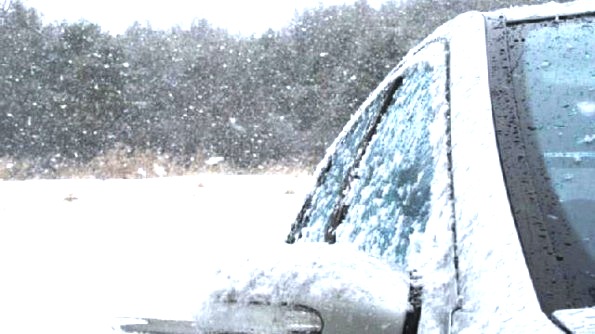Winter storms are a part of your life if you are a resident in Carson,…
How To: Drive in Winter Conditions

Ok, we know… you learned how to drive when you were 16… but in case you don’t happen to have your Driver’s Ed handbook handy, we thought we’d provide you with a quick refresher on winter weather driving. The cold weather and pending harsh conditions require everyone to be more aware and to take additional measures to be as safe as possible on the roads.
Driving in Snow and Ice
If there is a blizzard or extreme snowfall, the best advice is to not drive if at all possible. If you can, wait until snow plows and sanding trucks have had a chance to do their work. It’s also important to allow for extra time driving. Rushing in this weather can be extremely dangerous to not only yourself, but also to those around you.
If you must drive, it is important to make sure your car is prepared and that you know how to handle the road conditions, and it is helpful to practice winter driving techniques in a snowy, open parking lot (always using slow speeds). Consult an owner’s manual for your car for more details about how it performs in winter conditions.
Driving safely on icy roads:
- Decrease your speed and leave yourself plenty of room to stop. You should allow at least three times more space than usual between you and the car in front of you.
- Break gently to avoid skidding. If your wheels start to lock up, ease off the brake.
- Turn on your lights to increase visibility to other motorists.
- Keep your lights and windshield clean.
- Use low gears to keep traction, especially on hills.
- Don’t use cruise control or overdrive on icy roads.
- Be especially careful on bridges, overpasses and infrequently traveled roads, which will freeze first. Even at temperatures above freezing, if the conditions are wet, you might encounter ice in shady areas or on exposed roadways like bridges.
- Don’t pass snowplows and sanding trucks. The drivers have limited visibility and you’re likely to find the road in front of them worse than the road behind.
- Don’t assume your vehicle can handle all conditions. Even four-wheel and front-wheel drive vehicles can encounter trouble on winter roads.
If your rear wheels skid:
- Take your foot off the accelerator.
- Steer in the direction you want the front wheels to go. If your rear wheels are sliding left, steer left. If they are sliding right, steer right.
- If your rear wheels start sliding the other way as you recover, ease the steering wheel toward that side. You might have to steer left and right a few times to get your vehicle completely under control.
- If you have standard brakes, pump them gently.
- If you have anti-lock brakes (ABS), do not pump the brakes. Apply steady pressure to the brakes. You will feel the brakes pulse—this is normal.
If your front wheels skid:
- Take your foot off the gas and shift to neutral, but don’t try to steer immediately.
- As the wheels skid sideways, they will slow the vehicle and traction will return. As it does, steer in the direction you want to go. Then put the transmission in “drive” or release the clutch, and accelerate gently.
If you get stuck:
- Try not to spin your wheels. This will only dig you in deeper.
- Turn your wheels from side to side a few times to push snow out of the way.
- Use a light touch on the gas, to ease your car out.
- Use a shovel to clear snow away from the wheels and the underside of the car.
- Pour sand, kitty litter, gravel or salt in the path of the wheels, to help get traction.
- Try rocking the vehicle. (Check your owner’s manual first—it can damage the transmission on some vehicles.) Shift from forward to reverse, and back again. Each time you’re in gear, give a light touch on the gas until the vehicle gets going.
Most important- If you feel you cannot perform these tasks, it’s important to carry a cell phone and turn your hazard lights on so that you are easily identifiable and can call for help if needed.



